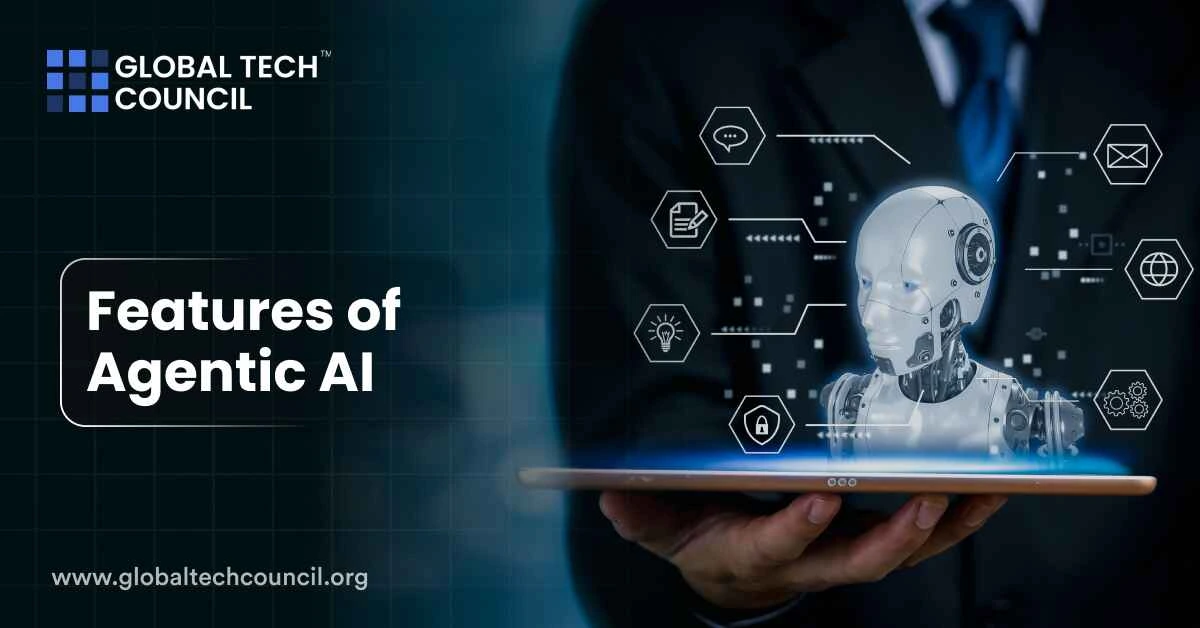
Let’s look at the features that make agentic AI different — and how it’s being used today.
What Agentic AI Means
Agentic AI refers to systems that can handle tasks without regular human input. These AI agents can think, plan, act, and learn — all while keeping a goal in mind.
Unlike systems like generative AI that need prompts, agentic AI runs with more freedom. It responds to changes, adjusts in real time, and keeps working without pause.
Features of Agentic AI
Autonomy In Decision-Making
One core feature of agentic AI is its ability to act independently. It doesn’t need someone to approve every move. These systems collect data, study it, and decide what to do next.
For example, Amazon’s Nova Act AI model can search the internet, buy items, and manage schedules inside a browser — all on its own.
Adaptive Learning And Real-Time Response
These AI agents don’t stay static. They learn by doing. As they interact with the world or users, they grow smarter. They take in new information and shift their behaviour right away.
This makes them ideal for fast-paced fields. Microsoft and CrowdStrike both use agentic AI in cybersecurity. Their systems handle alerts automatically and react to threats fast — without waiting for human help.
Integration With Tools And Platforms
Agentic AI isn’t locked in a box. It connects with tools that teams already use. That helps organisations get more from their systems.
Take PwC’s Agent OS platform as an example. It allows several AI agents to talk and work together. Instead of single-use tools, it creates a smooth, connected process across systems.
Context Awareness And Goal-Focused Action
These systems don’t just follow simple commands. They look at the full picture. Agentic AI understands context — what it’s doing, and why it matters.
It breaks big goals into smaller tasks and handles each one step by step. Microsoft’s CTO, Kevin Scott, has pointed out that product managers now guide how agents learn and give feedback — helping these systems stay focused and useful.
Memory And Ongoing Growth
Agentic AI doesn’t forget. It remembers what it’s done, what worked, and what didn’t. This memory helps it improve without needing retraining from scratch.
Over time, the system becomes faster, sharper, and more reliable. That shift turns agentic AI from a simple helper into a strong team member.
Learning about the features of Agentic AI? The Certified Agentic AI Developer™ certification gives you the knowledge to build and implement these tools effectively.
Where Agentic AI Is Already Working
Improving Customer Support
Agentic AI is already making support systems smarter. Modern chatbots can now hold real conversations. They understand what customers ask and give better answers.
This leads to faster replies and happier users. A Certified Agentic AI Expert™ is well-versed in the key features that define Agentic AI systems, making it a highly valuable certification.
Streamlining Supply Chains
In logistics, agentic AI plays a big role. These systems track supply data, predict demand, and adjust routes during delays. That helps businesses keep goods moving on time, even when problems come up.
Boosting Cybersecurity Teams
Security teams face growing threats. Agentic AI gives them extra hands. These systems find and react to threats on their own. They follow set rules and carry out actions without waiting for someone to step in.
Managing Finance Tasks
Banks and investment firms now use agentic AI to watch market changes. These systems can update portfolios without manual work. That reduces risk and improves how money is managed.
Challenges That Come With Agentic AI
System Demands
These AI agents need a lot of processing power. Running them takes strong hardware and plenty of resources. That can raise costs and slow down scaling.
Safety And Control
Since these systems act alone, they need strong safety checks. Companies must build clear rules for privacy, data use, and legal compliance. Without those, things can go wrong fast.
Getting Teams Ready
Agentic AI isn’t a plug-and-play tool. It changes how people work. Teams need training, clear roles, and support from leadership. Without full backing, the shift won’t stick.
Conclusion
Agentic AI brings a big step forward in artificial intelligence. These systems don’t wait for instructions — they move, learn, and work toward clear goals.
With features like memory, real-time learning, and independent thinking, agentic AI can reshape industries. It helps in areas like finance, security, logistics, and support. But for it to succeed, companies need to plan carefully, support teams, and stay aware of the limits.
If done right, agentic AI isn’t just a tool. It’s a true upgrade to how modern work gets done.
Leave a Reply